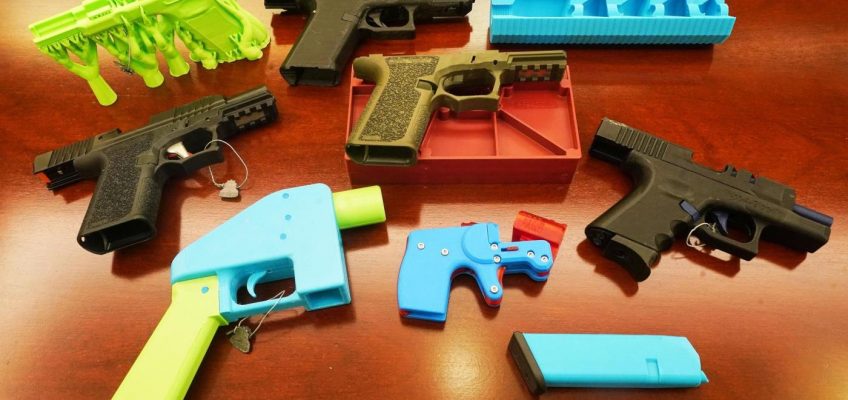By CLAUDIA LAUER, Associated Press
As police departments around the country report a surge in 3D-printed firearms turning up at crime scenes, gun safety advocates and law enforcement officials are warning that a new generation of untraceable weapons could soon eclipse the “ghost guns” that have already flooded U.S. streets.
At a summit in New York City on Thursday, the advocacy group Everytown for Gun Safety will bring together policymakers, academics, 3D-printing industry leaders and law enforcement officials to confront the growing challenge. They fear that as the printers become cheaper and more sophisticated — and blueprints for gun parts spread rapidly online — the U.S. could be on the brink of another wave of unregulated, homemade weapons that evade serial-number tracking and background checks.
Numbers collected by Everytown from about two dozen police departments show how quickly the problem is growing: A little over 30 3D-printed guns were recovered in 2020. By 2024, that figure had climbed above 300. While still a fraction of the tens of thousands of firearms seized each year by the nation’s nearly 18,000 police departments, the spike mirrors the early trajectory of ghost guns — build-it-yourself weapons assembled from kits that for years eluded federal regulation.
“We are now starting to see what kind of feels very familiar,” said Nick Suplina, senior vice president of law and policy at Everytown. “It’s now at a small number of recoveries in certain major cities, such that it’s doubling or tripling year over year. We’re seeing this very familiar rate of growth and that’s why we’re getting this group together to discuss how to stop it.”
Ghost guns, provided by the New York City Police Department, are displayed in the Manhattan District Attorney’s office, in New York, Wednesday, Oct. 15, 2025. (AP Photo/Richard Drew)
The federal Bureau of Alcohol, Tobacco, Firearms and Explosives imposed new rules in 2022 requiring serial numbers, background checks and age verification for ghost-gun kits, regulations upheld by the Supreme Court earlier this year. Lawsuits and state-level bans eventually pushed Polymer80, once the leading manufacturer of those kits, out of business in 2024.
But 3D-printed weapons present a thornier problem. They aren’t manufactured or sold through the firearms industry, and neither 3D-printer companies nor the cloud-based platforms that host gun blueprints fall under the ATF’s authority. That leaves much of the prevention work to voluntary action and new legislation.
In addition to seeking industry self regulations, the summit aims to bring together academics and policymakers to talk about possible legislative ways to address the issue such as creating statutes to criminalize manufacturing ghost guns or selling blueprints.
In New York, Manhattan District Attorney Alvin Bragg has pressed printer manufacturers and online platforms to take down gun designs and add safeguards against misuse. His office recently asked YouTube to remove a tutorial on printing a gun that a suspect said he found while watching a Call of Duty demonstration.
″So we reached out to YouTube and got their policies updated,” Bragg said. “If we were just prosecuting gun possessions rather than thinking about how to prevent these guns from getting printed and proactively talking to these companies, then we would be sorely behind the curve.”
Related Articles
Federal immigration officers in Chicago area will be required to wear body cameras, judge says
Colleges are fighting to prove their return on investment
Authorities identify remains of 14 of 16 victims in Tennessee explosion
US stocks drift higher, led by Nvidia and tech
Obesity remains high in the US, but more states are showing progress, a new report finds
A major digital design platform also agreed to implement a detection and removal program earlier this year after Bragg’s office found numerous gun blueprints being shared and available for download on its site.
Both Everytown and Bragg said companies have been receptive. Some printer makers have introduced firmware that recognizes gun part shapes and blocks the machines from producing them, an approach that advocates compare to safeguards added decades ago to prevent color printers from copying currency.
John Amin, founder and CEO of Spanish company Print&Go, said he became fascinated with 3D printing when he was an engineering student. He voluntarily implemented a series of checks to prevent illegal weapons from being made including human oversight and automated detections.
“We must focus on curbing misuse, not demonizing the tool. And we already have powerful ways to do just that,” Amin said.


Leave a Reply